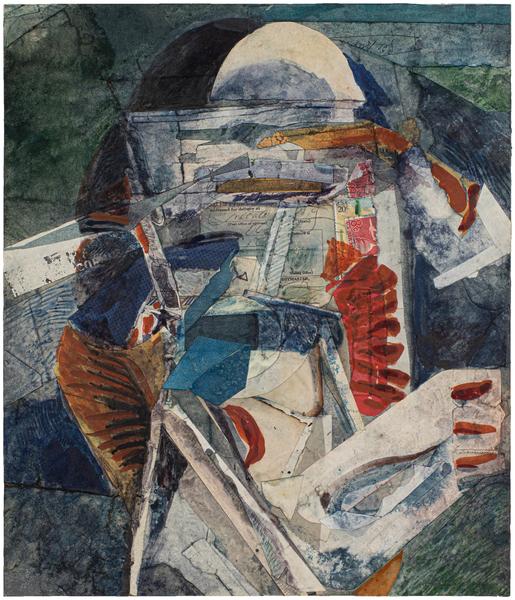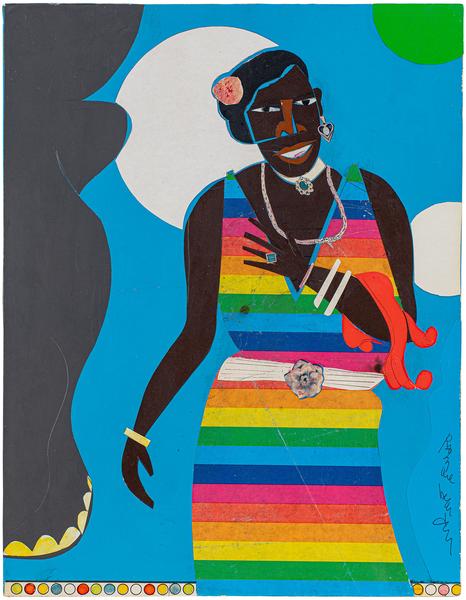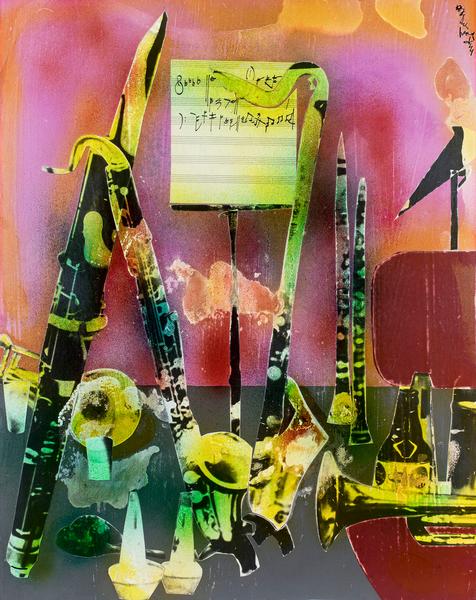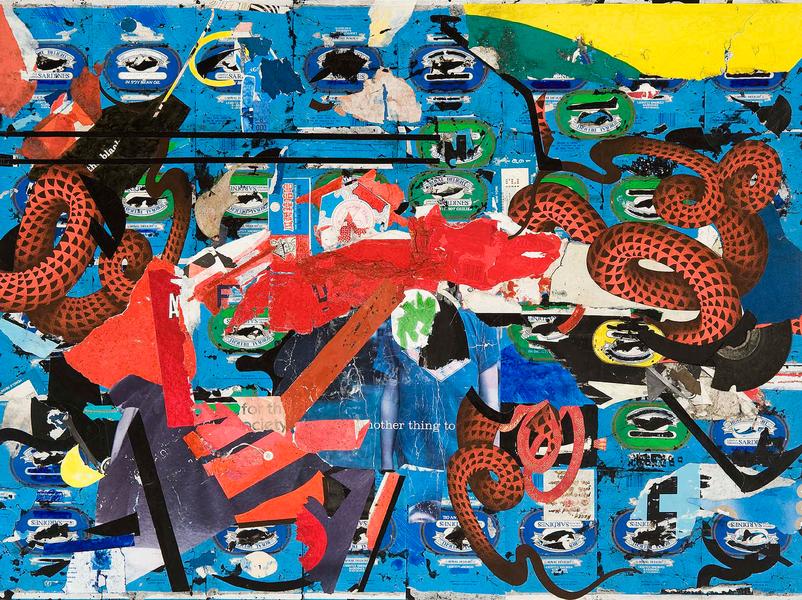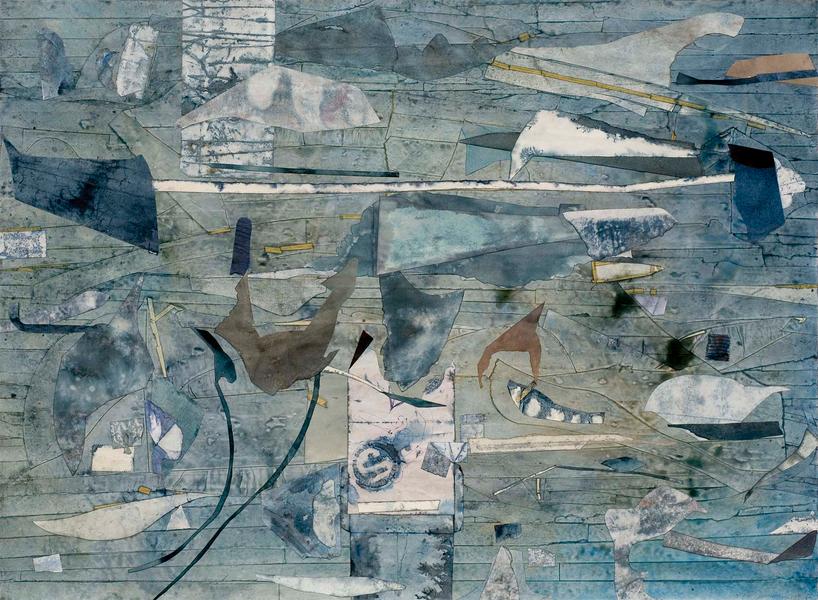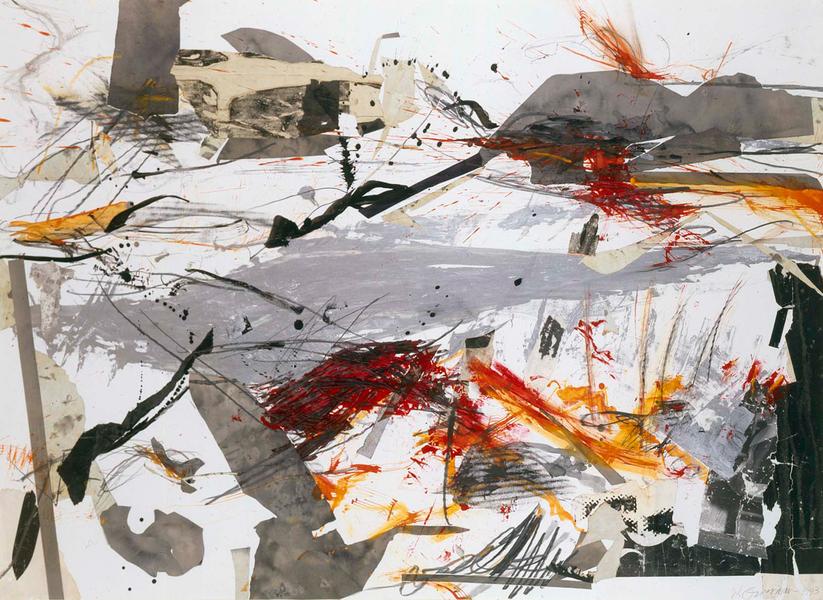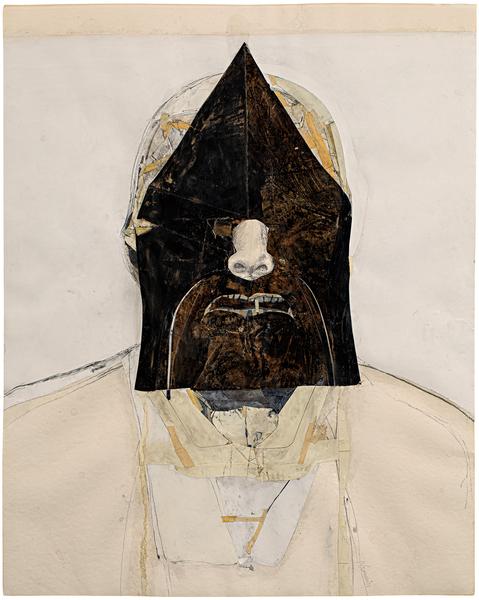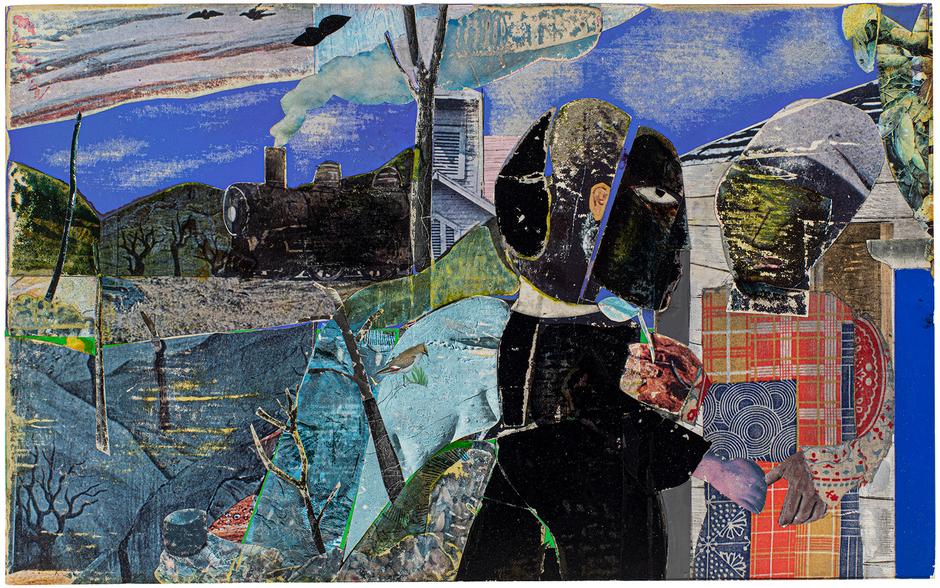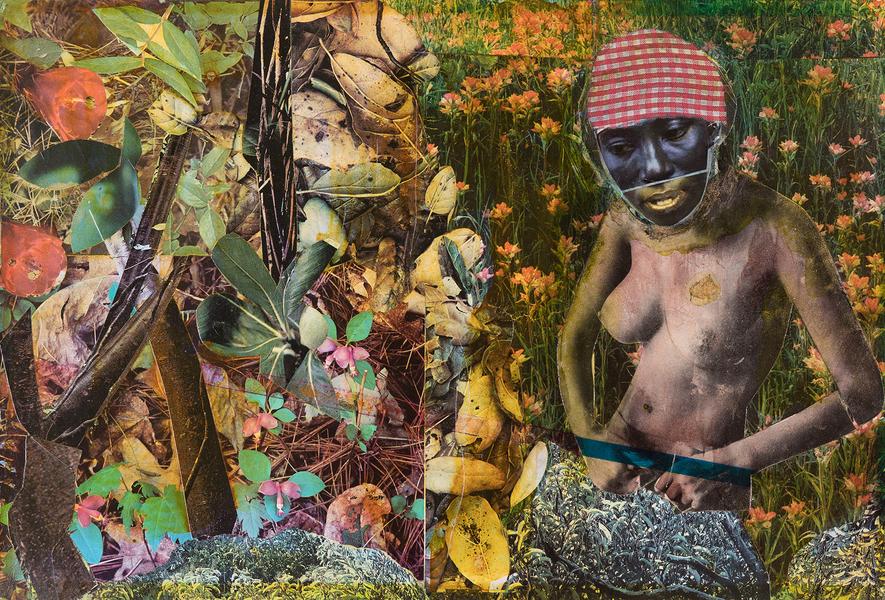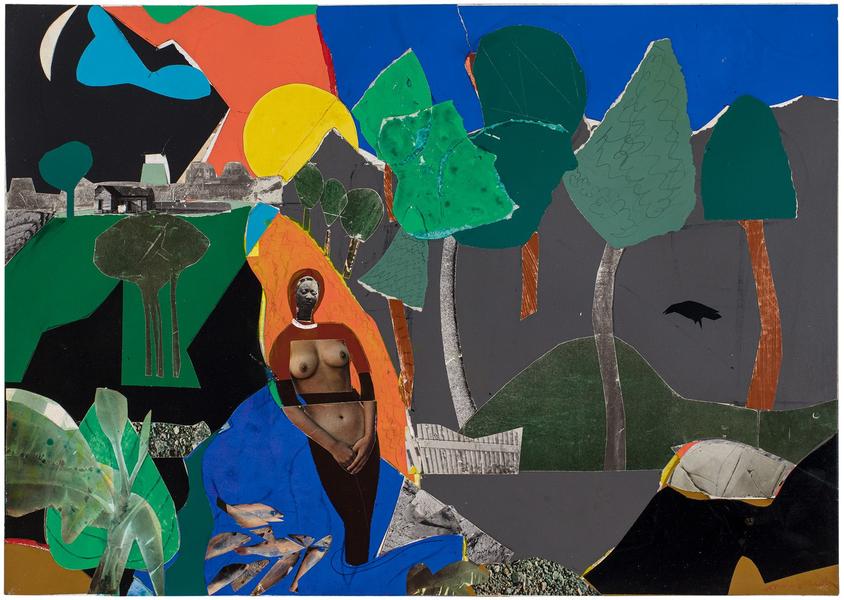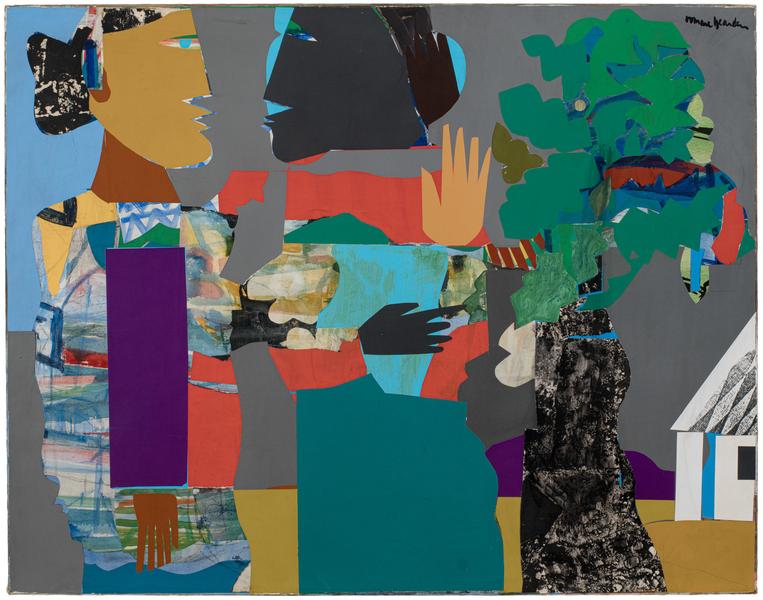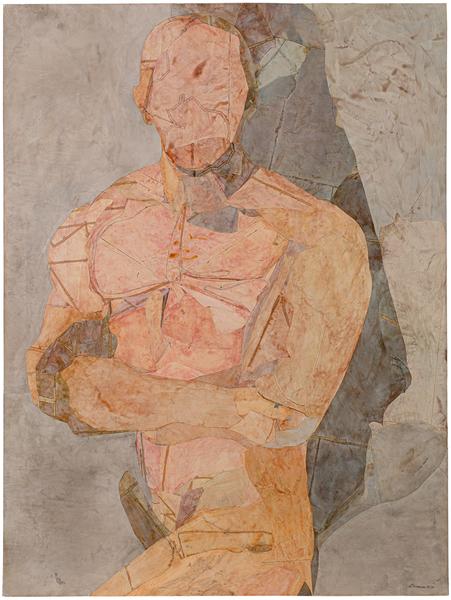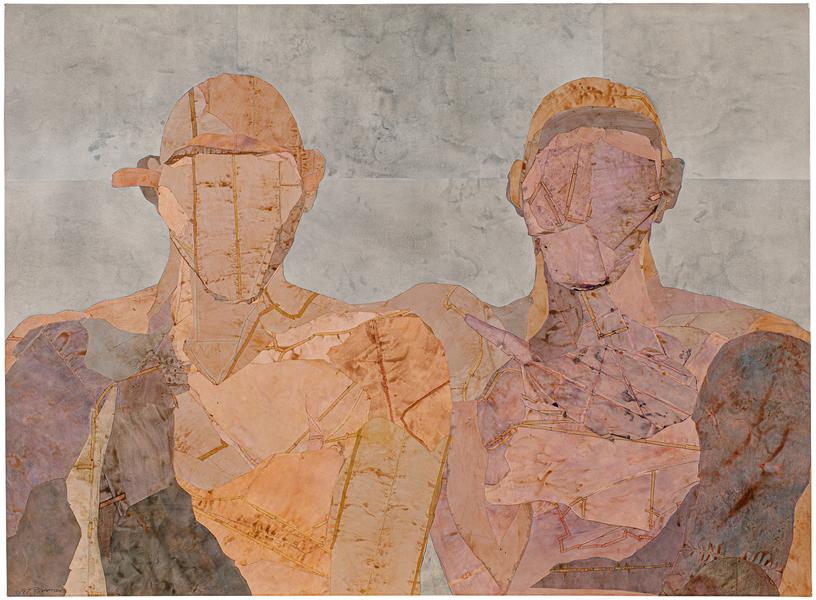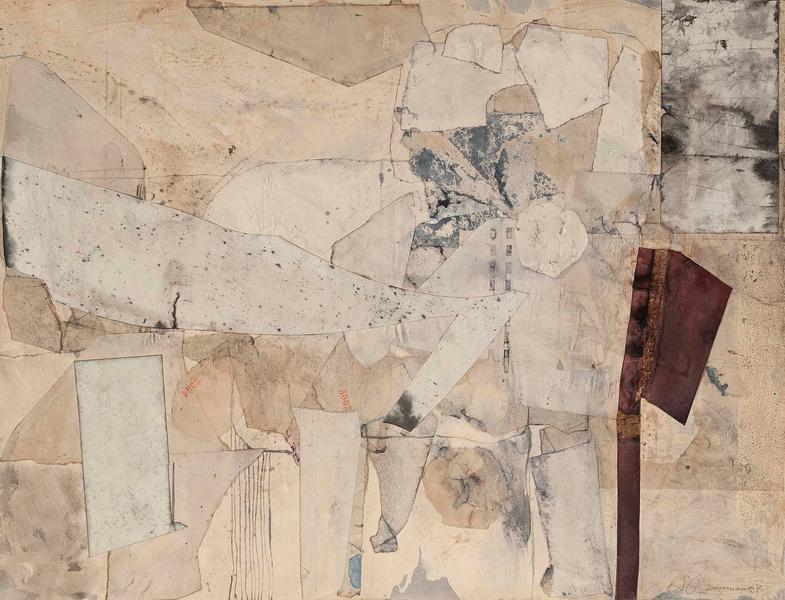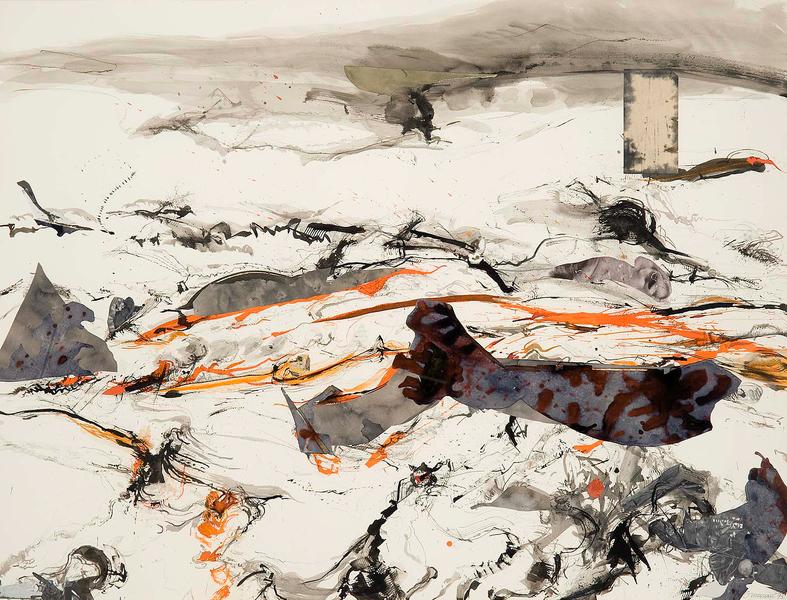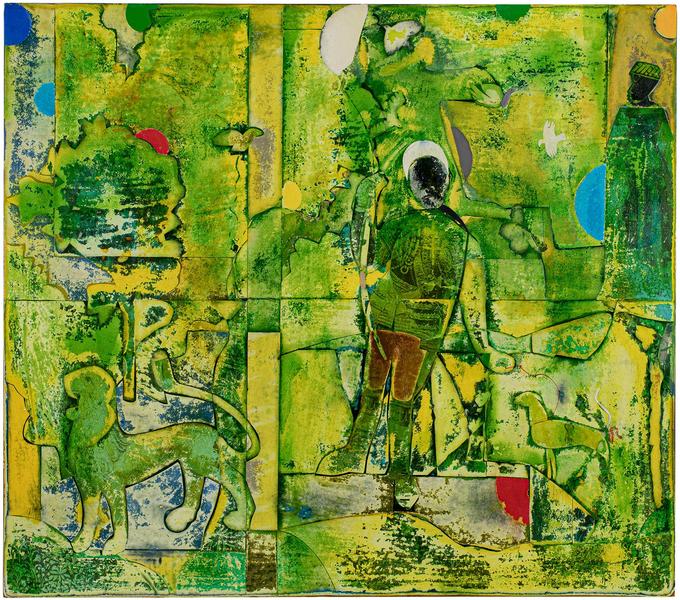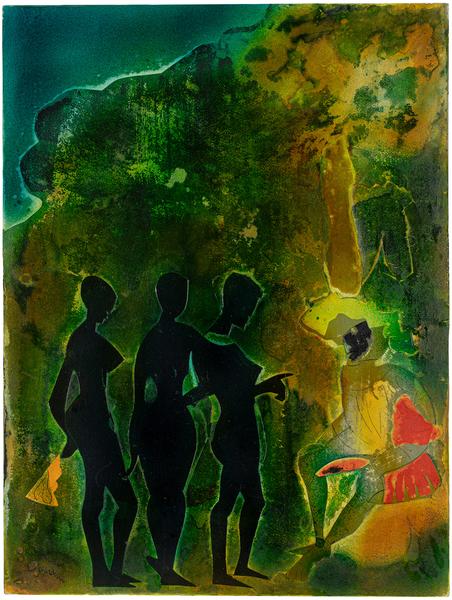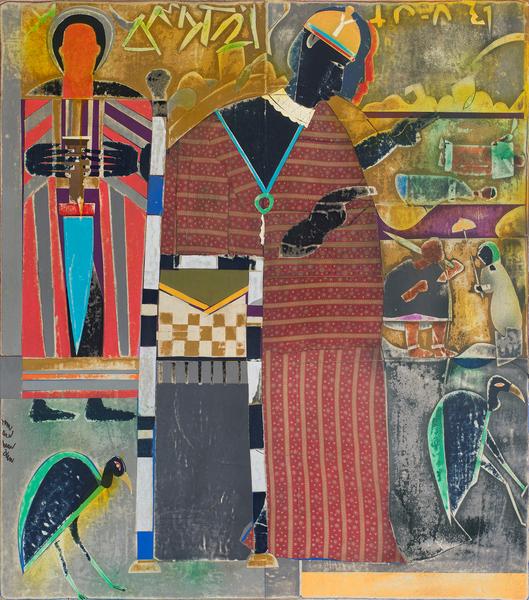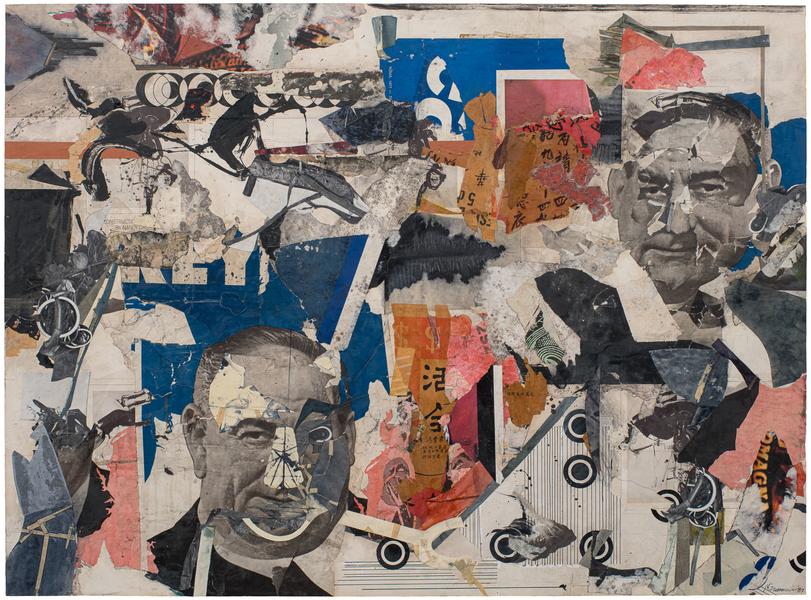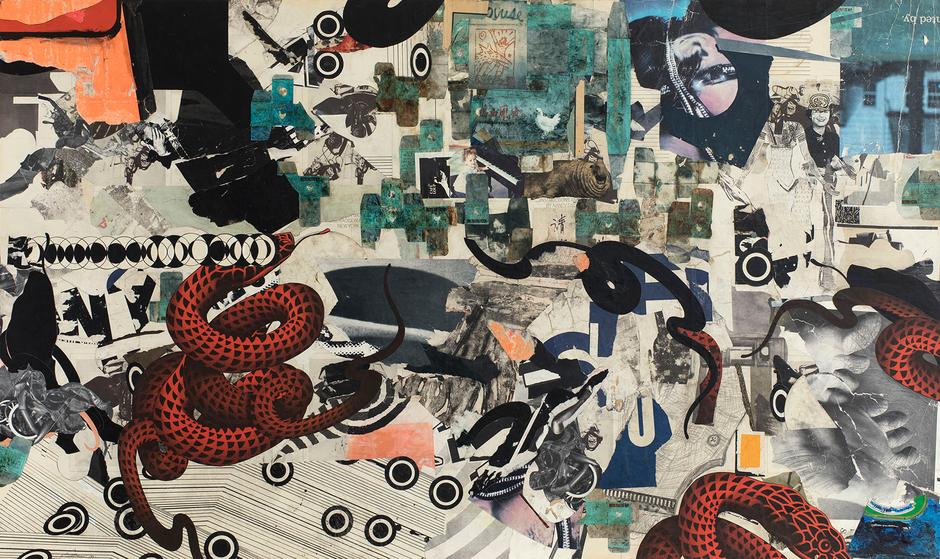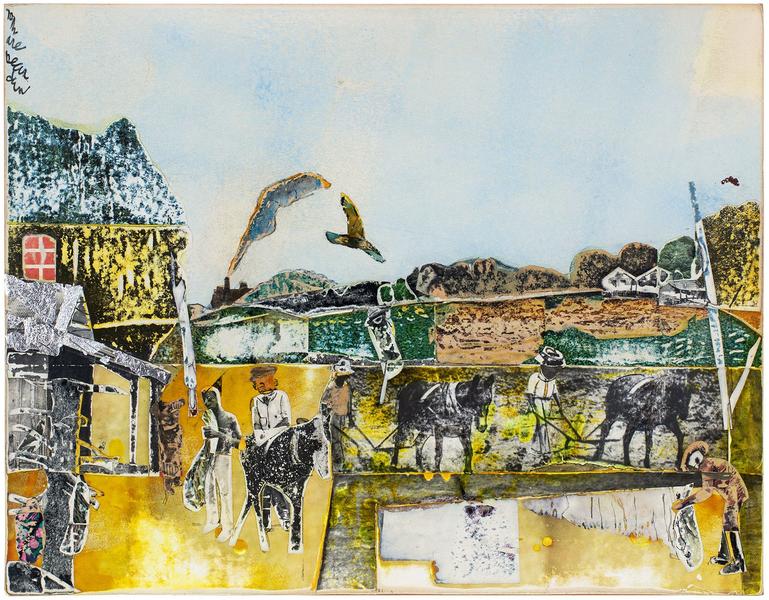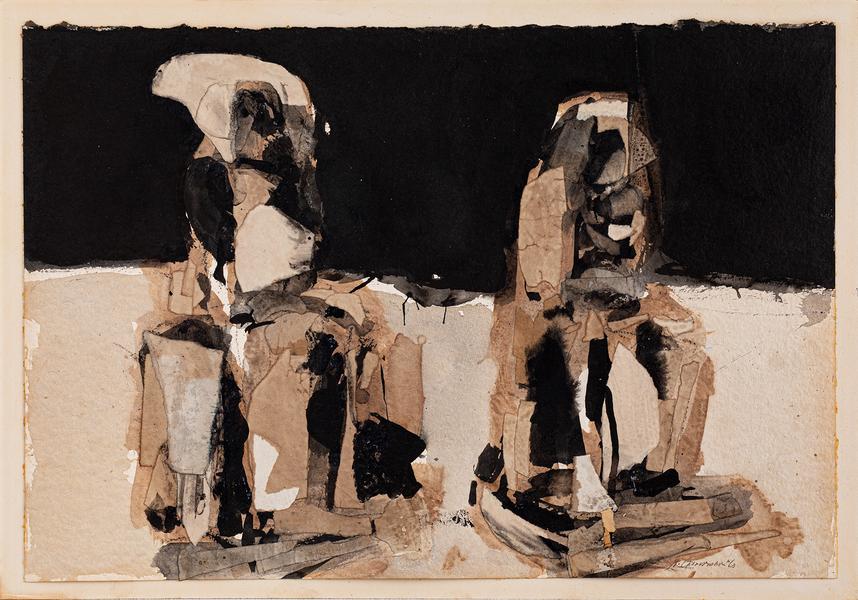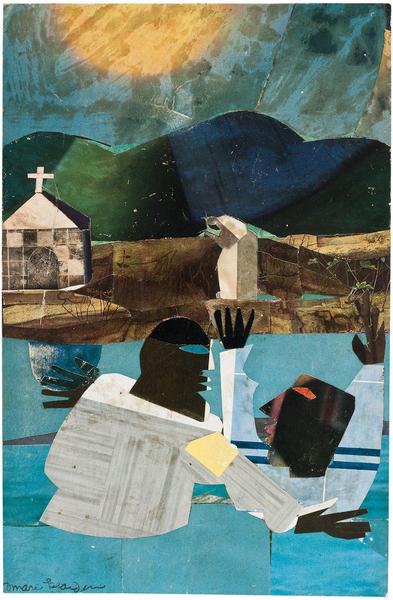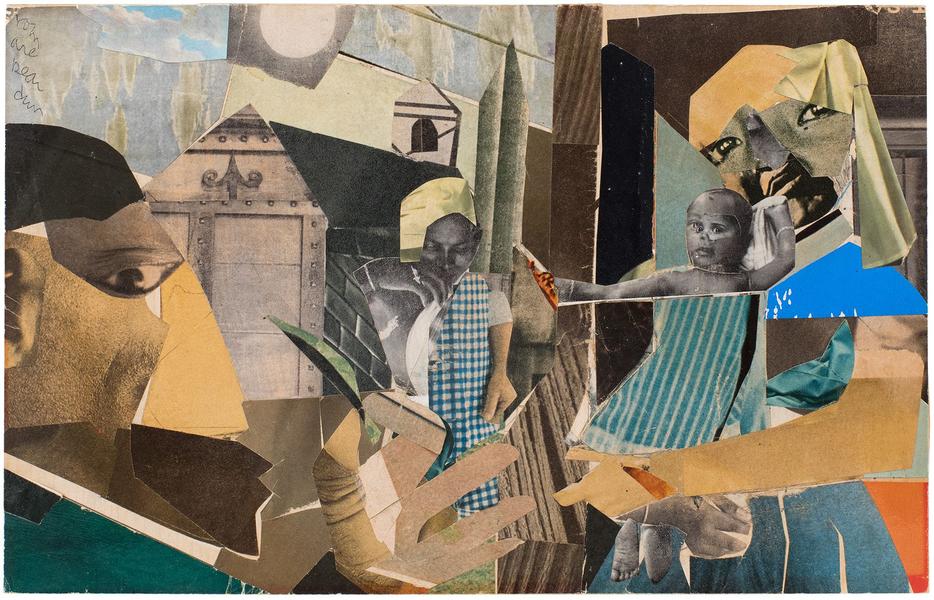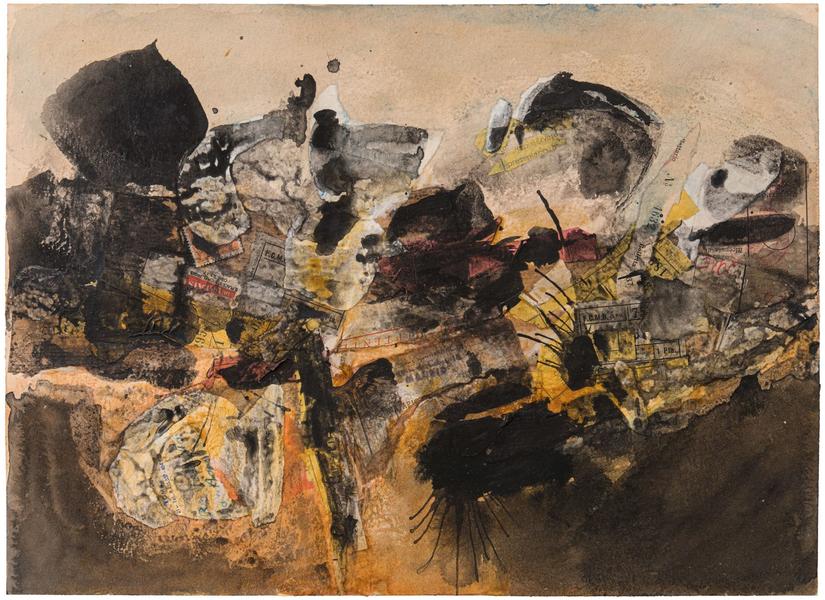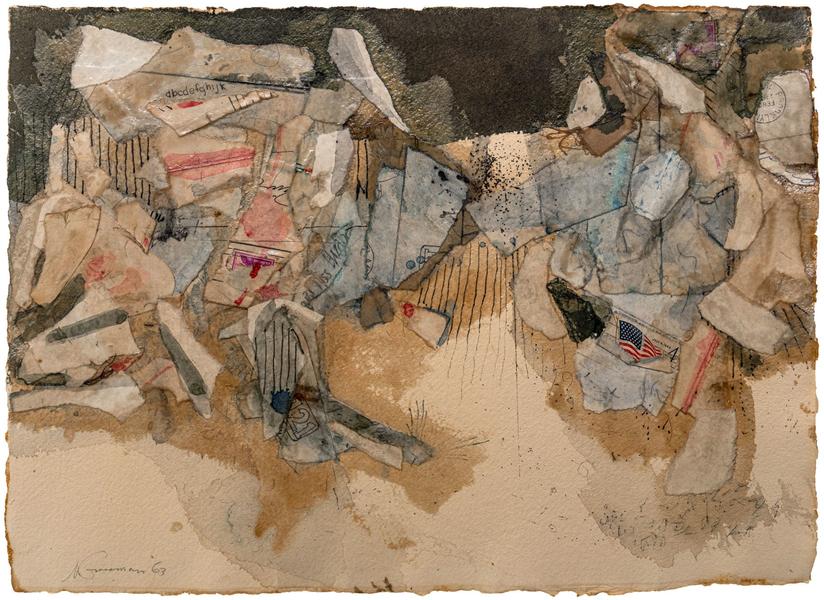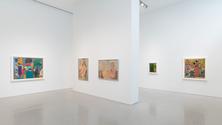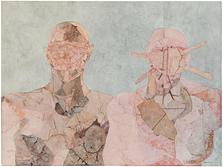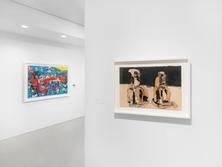Collage comes the closest to reality. It is the only way to make the disparate and ill-fitting parts of a life, an identity, an elegantly seamless experience. It satisfies both the urgent and the substantive thirst.[1]
—Nancy Grossman
I feel that when some photographic detail, such as a hand or an eye, is taken out of its original context and is fractured and integrated into a different space and form configuration, it acquires a plastic quality it did not have in the original photograph…Art, it must be remembered, is artifice, or a creative undertaking, the primary function of which is to add to our existing conception of reality.[2]
—Romare Bearden
Opening Reception: Saturday, September 7, 5:00-8:00PM
Michael Rosenfeld Gallery is pleased to present Romare Bearden & Nancy Grossman: Collage in Dialogue, an exhibition focused on the artistic exchange between two leading innovators of the medium. Though Bearden was a generation older than Grossman, the artists initiated their collage practices within a year of each other—Grossman in 1962 and Bearden in 1963—and shared crucial developments in their technique through a continuous dialogue. Brought together through the cultural milieu fostered by their dealer at the time, Cordier & Ekstrom Gallery, the two artists remained close friends until Bearden's death, forging a vital rapport that shaped their practices and lives.
The works presented in Romare Bearden & Nancy Grossman: Collage in Dialogue reveal surprising alignments between the artists’ collage oeuvres despite divergent subject matter and stylistic approaches. Both artists repurposed excerpts from previous artworks into material for new collages and applied various pigments (ink, acrylic, watercolor) to elements of many works in order to energize the composition. Where Bearden’s collages explore memory and autobiography within larger cultural narratives, Grossman’s collages are deeply psychological explorations of the human condition expressed via an open-ended material experimentation.
Bearden and Grossman’s works were shown together in group exhibitions at Cordier & Ekstrom as well as institutional venues beginning in the late 1960s, around the time that their friendship blossomed. This trend continued throughout the 1970s and 1980s, most notably in the Smithsonian Institution Traveling Exhibition Service (SITES) exhibition Collages: Selections from the Hirshhorn Museum and Sculpture Garden organized by Howard Fox, which toured the country from 1978–82. The two artists nurtured their friendship through regular studio visits, enthusiastic support of each other’s exhibitions, and numerous events related to their shared social circles. Grossman recalls long conversations with Bearden about art, food, and life unfolding during their studio visits, and she cherished the correspondence she received from him.
A particularly formative exchange between the two artists occurred shortly after 1967, when Bearden began sharing a studio with Jack Schindler, a commercial designer. Bearden had been experimenting with various supports for his new body of collage works, and Schindler suggested he use Masonite to mitigate the warping that occurred as the adhesive dried. Grossman had encountered a similar issue with her own collages around this time, and Bearden had consulted conservators at The Metropolitan Museum of Art regarding various treatments to stabilize their images. The solution arrived one day in the form of a rain-spotted note taped to Grossman’s mailbox: in Bearden’s hand, it read, “Glue paper to the back.” Sure enough, after adhering papers to the verso in equal weight to the materials on the front, both sides of the Masonite shrunk in sync and the surface remained flat.
Years later, Grossman honored Bearden and his technical revelation through the incorporation of his note into her complexly layered, large-scale collage Exploding Tongues - Untied Scape (1993), which features prominently in Collage in Dialogue. Both Grossman and Bearden maintained a vast cache of found and collected paper materials that held deeply personal significance to them, and Grossman’s retention of Bearden’s note over twenty-six years is emblematic of the artists’ accumulative tendencies. Exploding Tongues - Untied Scape is titled after experimental filmmaker Marlon Riggs’ landmark video essay dedicated to Black gay love, Tongues Untied (1989)—an apt tribute given the repeated presence of labels from sardine tins that were gifted to Grossman from her partner, the art historian Arlene Raven, rendering the collage a poignant, recombinant expression of love and friendship.




